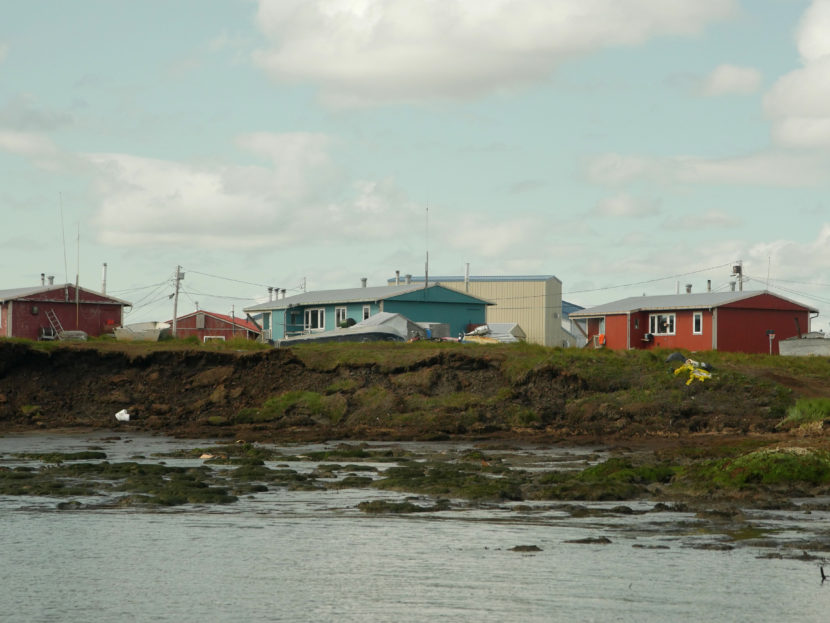
Ten years ago, the Army Corps of Engineers released a report that detailed the impacts of erosion in Alaska Native communities.
Don Antrobus is the program manager for the Denali Commission’s Village Infrastructure Protection Program. He helped guide an updated report that documents three environmental threats facing the communities: erosion, thawing permafrost, and flooding.
Antrobus said those environmental threats are made worse by climate change.
“In order for communities to develop good solutions, they need to fully understand the site-specific threat,” Antrobus said.
The Army Corps and researchers at the University of Alaska Fairbanks conducted the research and wrote up the report at the behest of the Denali Commission. It took three years and $700,000.
Antrobus said that more specific information is needed to fully understand the threats.
“One of the approaches that we’re taking, to try to kind of paint a bull’s-eye around what those additional data collection needs are, is to not only say that you need additional information, but to identify these are the specific types of communities, specific vulnerability analyses that are necessary,” Antrobus said.
This report examines 187 communities, most of them in Western Alaska near or right on the coast or near a river. It ranks them according to how bad the threat is endangering their infrastructure.
The rankings are complex. The report separates the three threats and ranks each community under each threat. Then the report combines all three for each community and ranks the communities that are in the biggest trouble.
“There is a little bit of uncertainty based on that availability of data, so it shouldn’t be taken as hard and fast,” Antrobus said.
The top two most threatened communities are Shaktoolik and Shishmaref, both close to the Bering and Chukchi seas.
“We were looking at flooding, erosion, and permafrost degradation threats to community infrastructure. And so I think it’s natural that a lot of … the greatest flooding threats that we’re gonna see are gonna be along the coast,” Antrobus said.
These villages have endured catastrophic erosion and storms, and the dwindling sea ice means that there is less protection for the shoreline. The ocean is nibbling closer to communities, forcing some, like Shishmaref, to consider relocation.
Other communities sit right next to a riverbank, like Napakiak and Newtok in the Yukon-Kuskokwim Delta. Newtok is relocating entirely, while Napakiak wants to move its school.
Antrobus said that the report could help communities figure out their biggest threat. For some, erosion is the biggest. For others, it’s flooding. He said this report is just a one-time effort, but he hopes government agencies and villages can fill in the gaps in data, and apply for funding to do so.
